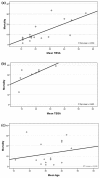Severe burn injury in Europe: a systematic review of the incidence, etiology, morbidity, and mortality
- PMID: 20958968
- PMCID: PMC3219295
- DOI: 10.1186/cc9300
Severe burn injury in Europe: a systematic review of the incidence, etiology, morbidity, and mortality
Abstract
Introduction: Burn injury is a serious pathology, potentially leading to severe morbidity and significant mortality, but it also has a considerable health-economic impact. The aim of this study was to describe the European hospitalized population with severe burn injury, including the incidence, etiology, risk factors, mortality, and causes of death.
Methods: The systematic literature search (1985 to 2009) involved PubMed, the Web of Science, and the search engine Google. The reference lists and the Science Citation Index were used for hand searching (snowballing). Only studies dealing with epidemiologic issues (for example, incidence and outcome) as their major topic, on hospitalized populations with severe burn injury (in secondary and tertiary care) in Europe were included. Language restrictions were set on English, French, and Dutch.
Results: The search led to 76 eligible studies, including more than 186,500 patients in total. The annual incidence of severe burns was 0.2 to 2.9/10,000 inhabitants with a decreasing trend in time. Almost 50% of patients were younger than 16 years, and ~60% were male patients. Flames, scalds, and contact burns were the most prevalent causes in the total population, but in children, scalds clearly dominated. Mortality was usually between 1.4% and 18% and is decreasing in time. Major risk factors for death were older age and a higher total percentage of burned surface area, as well as chronic diseases. (Multi) organ failure and sepsis were the most frequently reported causes of death. The main causes of early death (< 48 hours) were burn shock and inhalation injury.
Conclusions: Despite the lack of a large-scale European registration of burn injury, more epidemiologic information is available about the hospitalized population with severe burn injury than is generally presumed. National and international registration systems nevertheless remain necessary to allow better targeting of prevention campaigns and further improvement of cost-effectiveness in total burn care.
Figures



References
-
- World Burn Foundation. http://www.burnsurvivorsonline.com/
-
- American Burn Association. Appendix B to hospital resources document: guidelines for service standards and severity classifications in the treatment of burn injury. Bull Am Coll Surg. 1984;69:24–28. - PubMed
Publication types
MeSH terms
LinkOut - more resources
Full Text Sources
Medical

